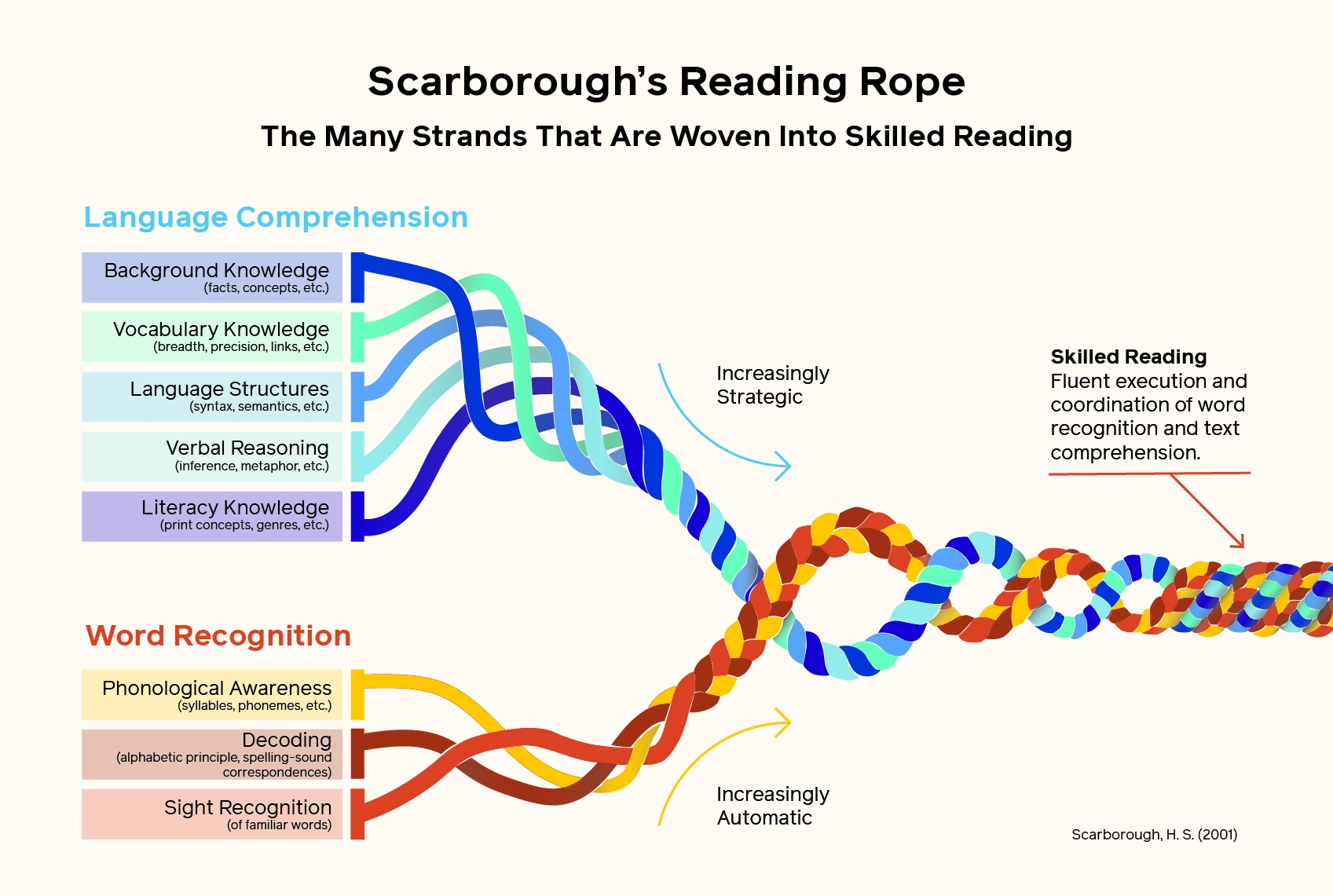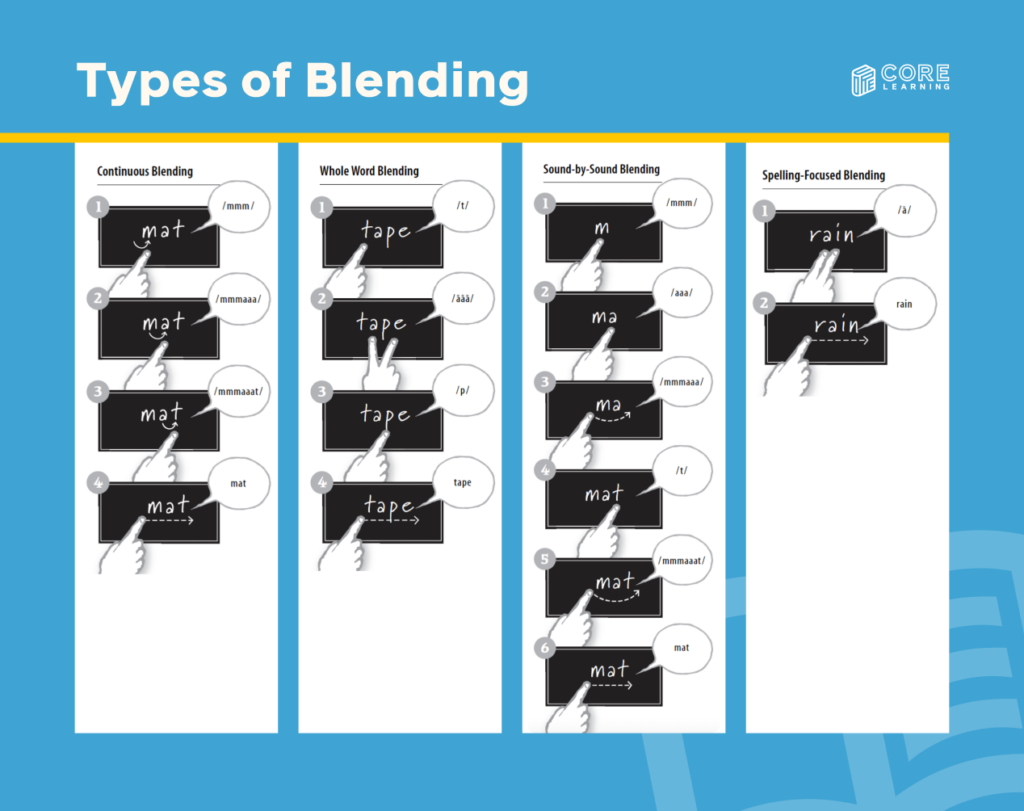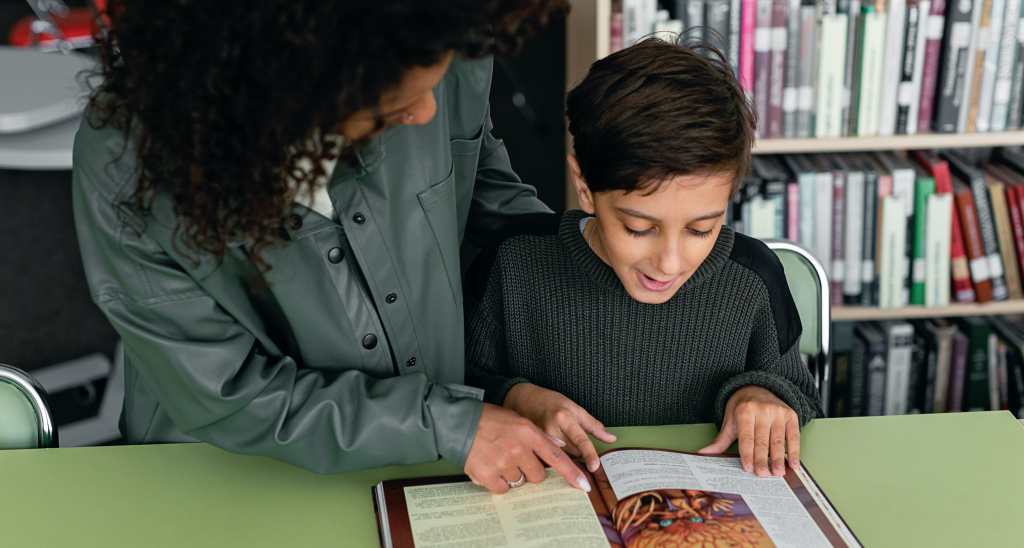Move between routines based on student needs, providing more support as you introduce new sounds and less scaffolding and support as students become more independent. When you hear an error, provide quick and positive error correction that supports students rereading the word and arriving at the correct pronunciation, instead of giving them the answer and moving on.
Example decodable word list:
Creek | must
Meet | street
Crisp | kite
Treat | flute
Fleet | edge
Moat | tree
Trick | float
Perch | cheek
Step Four: Build Automatic Word Recognition (3 minutes)
Automatic word recognition enables students to decode words quickly and effortlessly.
Use the words blended in step three to develop the quick and effortless reading of words. Use consistent signals to cue students to respond by chorally reading the words so that one or two students do not rush or dominate the activity.
You may also practice previously taught irregular words at this step.
Automatic Word Reading Routine:
Teacher: Points to the left of the first word and says, “Think.”
Students: Read the word silently in their heads.
Teacher: Waits two seconds and says, “Word” to signal students to say the word as they sweep their finger quickly under the word.
Students: Read the whole word aloud in unison.
Step Five: Apply to Decodable Text (10 minutes)
Decodable texts provide an opportunity for students to practice and apply newly acquired phonics skills and develop fluency. As students move through steps five and six, they become increasingly independent in their application of taught skills.
It’s important to remember that a text is only decodable if the students have been taught and have had ample practice with the sound/spelling correspondences included in the words and if the majority of irregular words have been previously taught.
At this step, you will present the decodable text from the lesson or write one or two sentences containing this week’s phonics focus, words with earlier learned phonics skills, and previously taught irregular words.
Apply to Decodable Text Routine:
More information about this routine can be found on pages 235-239 of the Teaching Reading Sourcebook.
First step: Students whisper-read the page (or sentences) to themselves.
Second step: Teacher and students choral read the page (or sentences) together.
Third step: After students have whisper-read and have chorally read each page in the book (or sentences), the teacher randomly calls on individual students to take a turn reading a sentence or two aloud while the rest of the class reads along by tracking the text with their finger. Reread the entire text in this manner. After this step, students will have read the text in various ways three times. It is then appropriate, and necessary, to have students respond to literal questions about the text. This teaches students that we read to gain meaning from the text. As part of their response, students should show which sentence or page supports their answer by physically touching the supporting text. This teaches an important comprehension skill of finding the answer in the text.
Fourth step: Students re-read text independently or in partners for fluency practice while the teacher circulates to listen to students read, giving prompts and error-corrections as needed.
Step Six: Word Work for Decoding and Encoding (10 minutes)
In this step, students practice the skills they built during steps one to five. Word work allows them to apply sound/spelling patterns by writing, building, manipulating, and sorting words. These activities should provide opportunities for students to both encode and decode words.
Dictation offers opportunities for encoding and provides a simple formative assessment to help guide instruction. You can also incorporate additional word work activities, such as word sorts or practice with spelling patterns, into small group or individual practice time.
It’s essential not to skip this step, so if you’re short of time, reduce the number of words blended in previous steps.
Dictation Routine: Sound Dictation:
Teacher: Dictates sound /ē/
Students: Echo sound /ē/
Teacher: “Write all the spellings you can think of to represent the /ē/ sound.”
Students: Write all the ways they know on a dry-erase board, in a notebook, or on paper. (e, e_e, ee, ea)
Teacher: “What spellings represent the /ē/ sound?”
Students: Respond either chorally or individually e, e_e, ee, and ea.
Teacher: Teacher writes the different spellings on the board or points the sound-spelling card on the wall that shows the long e spellings taught.
Students: Check that they wrote the correct letter(s) from the model.
Word Dictation:
Teacher: Dictates the word “The word is “meet”. As in, meet me at eight. What is the word?”
Students: Echo the word “meet.”
Teacher: “Now, let’s count the sounds in the word ‘meet.’ Hold up a finger as you say each sound.”
Teacher and students: Say the sounds together, holding up a finger for each sound. “/m/ /ē/ /t/.”
Teacher: “How many fingers are we holding up?” (Three)
Teacher: “How many sounds in meet? (Three) “Yes, there are three sounds in meet.”
Teacher: “Think about the three sounds in ‘meet.’ Check the sound-spelling cards. Now write the word ‘meet,’ sound by sound, on your paper.” Give guidance for the spelling of /ē/ by referring back to the sound-spelling card.
Teacher: After students have had a chance to write, prints the word meet on the board and asks students to hold up their papers and compare their spelling with the word on the board.
Students: Check their work and correct the word if necessary.
Teacher: “Now, let’s say and spell the word together, meet . . . m-e-e-t.”
Similar to blending, there are different dictation routines that are more or less scaffolded. For more detail, see page 219 for Sound-by-Sound Dictation and p. 230 for Whole Word Dictation in the Teaching Reading Sourcebook.
Sentence Dictation:
Teacher: Dictates sentence, “I like green beans and peas.”
Students: Echo sentence, “I like green beans and peas.”
Teacher: Asks students to repeat the sentence again.
Students: Repeat the sentence.
Teacher: “How many words are in the sentence?”
Students: Repeat the sentence and count the words.
Students: Write the sentence on a dry-erase board, in a notebook, or on paper.
Teacher: Monitors students and repeats the sentence to students who ask, giving error corrections, as needed.
Teacher: “Read the sentence back to me.”
Students: Read the sentence back to the teacher.
Teacher: Writes the sentence on the board. Teacher quickly notes capitalization, punctuation, handwriting, spacing, spelling, etc.
Students: Check their work and correct words if necessary.









